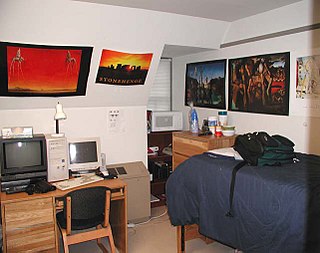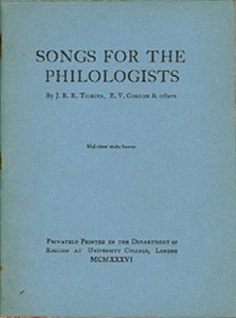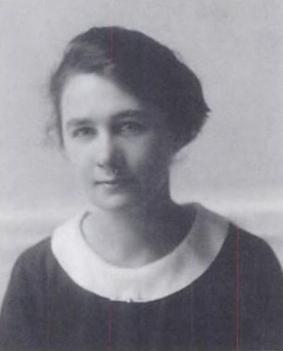Related Research Articles
The Bliss bibliographic classification (BC) is a library classification system that was created by Henry E. Bliss (1870–1955) and published in four volumes between 1940 and 1953. Although originally devised in the United States, it was more commonly adopted by British libraries. A second edition of the system (BC2) has been in ongoing development in Britain since 1977.

A library classification is a system of organization of knowledge in which sources are arranged according to the classification scheme and ordered very systematically. Library classifications are a notational system that represents the order of topics in the classification and allows items to be stored in the order of classification. Library classification systems group related materials together, typically arranged as a hierarchical tree structure. A different kind of classification system, called a faceted classification system, is also widely used, which allows the assignment of multiple classifications to an object, enabling the classifications to be ordered in many ways.
University College London, which operates as UCL, is a public research university in London, England. It is a member institution of the federal University of London, and is the second-largest university in the United Kingdom by total enrolment and the largest by postgraduate enrolment.

A dormitory, also known as a hall of residence or a residence hall, is a building primarily providing sleeping and residential quarters for large numbers of people such as boarding school, high school, college or university students. In some countries, it can also refer to a room containing several beds accommodating people.

The UCL Institute of Education (IOE) is the faculty of education and society of University College London (UCL). It specialises in postgraduate study and research in the field of education and is one of UCL's 11 constituent faculties. Prior to merging with UCL in 2014, it was a constituent college of the University of London. The IOE is ranked first in the world for education in the QS World University Rankings, and has been so every year since 2014.

Yeungnam University is a private research university located in Gyeongsan, North Gyeongsang, South Korea. The university's predecessors, Taegu College and Chunggu College, were founded in Daegu in 1947 and 1950 respectively. In 1967, the two colleges were merged by President Park Chung Hee to form Yeungnam University. In 1972, the university's new main campus opened in Gyeongsan east of Daegu. The university includes colleges of Law and Medicine as well as a university hospital. It ranked 1st in the rate for passing the bar exam for the second straight year (2015~2016), it also ranked 6th in providing CEOs in Korea's top 100 companies (2015), and 6th in providing the CEOs in Companies listed on KOSDAQ (2014). Yeungnam University is ranked 501 in the Academic Ranking of World Universities by Shanghai Jiao Tong University.

In the United Kingdom, medical school generally refers to a department within a university which is involved in the education of future medical practitioners. All leading British medical schools are state-funded and their core purpose is to train doctors on behalf of the National Health Service. Courses generally last four to six years: two years of pre-clinical training in an academic environment and two to three years clinical training at a teaching hospital and in community settings. Medical schools and teaching hospitals are closely integrated. The course of study is extended to six years if an intercalated degree is taken in a related subject.

Songs for the Philologists is a collection of poems by E. V. Gordon and J. R. R. Tolkien as well as traditional songs. It is the rarest and most difficult to find Tolkien-related book. Originally a collection of typescripts compiled by Gordon in 1921–1926 for the students of the University of Leeds, it was given by A. H. Smith of University College London, a former student at Leeds, to a group of students to be printed privately in 1935 or 1936, and printed in 1936 with the impressum "Printed by G. Tillotson, A. H. Smith, B. Pattison and other members of the English Department, University College, London."
Sir Michael James Paul Arthur FMedSci is a British academic who was the tenth provost and president of University College London between 2013 and January 2021. Arthur had previously been chairman of the Russell Group of UK universities and the vice-chancellor of the University of Leeds between September 2004 and 2013.

The third-oldest university in England debate has been carried out since the mid-19th century, with rival claims being made originally by Durham University as the third-oldest officially recognised university (1832) and the third to confer degrees (1837) and the University of London as the third university to be granted a royal charter (1836). These have been joined more recently by University College London as it was founded as London University (1826) and was the third-oldest university institution to start teaching (1828) and by King's College London. Most historians identify Durham as the third-oldest, following standard practice in how a university is defined and how this is applied historically, although the popular press is more divided.
Edward Armand Guggenheim FRS was an English physical chemist, noted for his contributions to thermodynamics.

University College London (UCL) was founded on 11 February 1826, under the name London University, as a secular alternative to the strictly religious universities of Oxford and Cambridge. It was founded with the intention from the beginning of it being a university, not a college or institute. However its founders encountered strong opposition from the Church of England, the existing universities and the medical schools which prevented them from securing the Royal Charter under the title of "university" that would grant "London University" official recognition and allow it to award degrees. It was not until 1836, when the latter-day University of London was established, that it was legally recognised and granted the authority to submit students for the degree examinations of the University of London.

The Railway Clearing House (RCH) was an organisation set up to manage the allocation of revenue collected by pre-grouping railway companies for the conveyance of passengers and goods over the lines of other companies. It went on to become the major regulatory body overseeing the day-to-day running of railways in Great Britain and setting common standards for railway companies, which ensured their safety and interoperability. The RCH also produced fare structures governing many aspects of rail transport at a national level and set limits on price increases for passenger travel.

The UCL Centre for Digital Humanities is a cross-faculty research centre of University College London. It brings together digital humanities work being done in many of the university's different departments and centres, including the library services, museums and collections. The Centre counts among the "most visible" in the field and facilitates various opportunities for study at post-graduate level, including the MA/MSc in Digital Humanities, doctoral study, and short courses as part of the Department of Information Studies.
Lieutenant Colonel Kenneth Garside was a librarian, information theorist and World War II British Intelligence Corps officer.

The Brotherton Library is a 1936 Grade II listed Neoclassical building with some art deco fittings, located on the main campus of the University of Leeds. It was designed by the firm of Lanchester & Lodge, and is named after Edward Brotherton, 1st Baron Brotherton, who in 1927 donated £100,000 to the university as funding for its first purpose-built library.

Lilias Eveline Armstrong was an English phonetician. She worked at University College London, where she attained the rank of reader. Armstrong is most known for her work on English intonation as well as the phonetics and tone of Somali and Kikuyu. Her book on English intonation, written with Ida C. Ward, was in print for 50 years. Armstrong also provided some of the first detailed descriptions of tone in Somali and Kikuyu.
Newham Collegiate Sixth Form Centre, also known as The NCS, is a free school sixth form college located in East Ham, London, England. Administered by the City of London Academies Trust, it was opened in 2014. The college is coeducational and is affiliated with University College London who is a strategic partner. It is rated “Outstanding” by Ofsted. It has an ALPS 1 score for value added.

The UCL Division of Psychology and Language Sciences is a Division within the Faculty of Brain Sciences of University College London (UCL) and is located in London, United Kingdom. The Division offers teaching and training and undertakes research in psychology and communication and allied clinical and basic science. It is the largest university psychology department in England.
The London Education Classification is a library classification and indexing thesaurus used at the UCL Institute of Education. It was devised by D.J. Foskett and Joy Foskett. It was devised to address deficiencies in general classification schemes in dealing with education. It was originally devised in 1963, and revised in 1974. It is a faceted classification, inspired by the work of S.R. Ranganathan and of the Classification Research Group.
References
- ↑ "Garside Classification Scheme". UCL Library Services. UCL Library Services. 2007. Archived from the original on 2 September 2013. Retrieved 10 September 2013.
- 1 2 3 Garside, Kenneth (1955). "The Basic Principles of the New Library Classification at University College, London". Journal of Documentation. 10 (4): 169–192. doi:10.1108/eb026207. ISSN 0022-0418.
- 1 2 3 Bonser, Wilfrid; Garside, Kenneth (1955). "The Classification of the Library of the Folk-Lore Society". Folklore. 66 (2): 267–281. doi:10.1080/0015587x.1955.9717469. JSTOR 1258268.
- ↑ "Classification scheme -- biology". UCL Library Services. 2004. Archived from the original on 14 December 2004. Retrieved 10 September 2013.
- ↑ John Salter (2008). "Leeds University Library classification scheme". Leeds University Library. Leeds University Library. Archived from the original on 18 July 2011. Retrieved 8 December 2010.